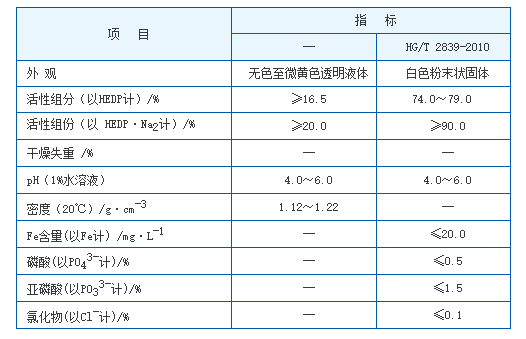diethylenetriamine penta methylene phosphonic acid
Diethylenetriamine Penta Methylene Phosphonic Acid An Overview
Diethylenetriamine penta methylene phosphonic acid (DTPMPA) is a phosphonic acid derivative, noted for its chelating properties and vital role in various industrial applications. With its molecular structure featuring five phosphonic acid groups and a diethylenetriamine backbone, DTPMPA offers a unique combination of functional characteristics that make it highly effective in treating water, enhancing the efficiency of detergents, and acting as a corrosion inhibitor. This article explores the properties, applications, and significance of DTPMPA in modern industry.
Chemical Properties
DTPMPA is a high-performance chelating agent, primarily known for its ability to bind metal ions. The presence of five phosphonic acid groups allows the molecule to form stable complexes with a range of cations, including heavy metals such as iron, calcium, and magnesium. These properties enable DTPMPA to effectively sequester minerals that could otherwise lead to scale formation and precipitation in water systems. Additionally, its chemical resilience under varying pH levels makes DTPMPA a reliable choice for various applications, including water treatment.
Applications in Water Treatment
Water treatment is one of the most significant applications of DTPMPA. The chemical is widely used in cooling water systems, boilers, and industrial processes to prevent scale formation and corrosion, thereby ensuring the efficiency and longevity of equipment. When added to water systems, DTPMPA acts to stabilize metal ions, inhibiting their propensity to precipitate and form scale. This results in lower maintenance costs, fewer shutdowns for cleaning, and more efficient heat transfer in cooling systems.
Furthermore, DTPMPA is effective in preventing biofouling, a common issue in water treatment and circulation systems
. By inhibiting the growth of microorganisms that can form biofilms, DTPMPA contributes to the overall hygiene and operational efficiency of water systems.Enhancements in Detergents
diethylenetriamine penta methylene phosphonic acid

In the detergent industry, DTPMPA plays a pivotal role as a builder. Builders are compounds that enhance the effectiveness of surfactants by binding hardness ions present in water. The incorporation of DTPMPA in detergents improves cleaning efficiency, particularly in hard water conditions where calcium and magnesium ions are prevalent. By sequestering these ions, DTPMPA allows detergents to work more effectively, leading to better stain removal and overall cleaning performance. This capability is essential not just in household cleaning products but also in industrial cleaners where operational efficiency is paramount.
Corrosion Inhibition
Corrosion is a significant concern for industry, costing billions annually in repairs and maintenance. DTPMPA's role as a corrosion inhibitor stems from its ability to form protective films on metal surfaces. When used in metalworking fluids or cooling waters, DTPMPA helps mitigate corrosion by binding to the metal surface, thereby creating a barrier against oxidizing agents. This reduces the rate of deterioration, extending the life of machinery and infrastructure while minimizing downtime.
Environmental Considerations
As environmental regulations become more stringent, the demand for biodegradable and eco-friendly alternatives in various industries has surged. DTPMPA stands out due to its relatively low environmental impact compared to traditional phosphates. While phosphoric compounds can contribute to eutrophication in water bodies, DTPMPA provides a more acceptable option as it is less likely to lead to these environmental issues when used correctly.
Conclusion
Diethylenetriamine penta methylene phosphonic acid represents a crucial compound in many industrial applications, chiefly in water treatment, detergents, and corrosion inhibition. Its unique chelating properties, combined with its ability to enhance system efficiency and reduce environmental impact, make it an invaluable asset in modern industries. As innovation continues and the importance of sustainability rises, the role of DTPMPA will likely expand, driving further advancements in chemical applications and promoting safer, more efficient industrial practices. With ongoing research and development, DTPMPA may yet uncover even more significant uses, solidifying its position in the toolkit of industrial chemicals.
-
Water Treatment with Flocculant Water TreatmentNewsJun.12,2025
-
Polymaleic AnhydrideNewsJun.12,2025
-
Polyaspartic AcidNewsJun.12,2025
-
Enhance Industrial Processes with IsothiazolinonesNewsJun.12,2025
-
Enhance Industrial Processes with PBTCA SolutionsNewsJun.12,2025
-
Dodecyldimethylbenzylammonium Chloride SolutionsNewsJun.12,2025





